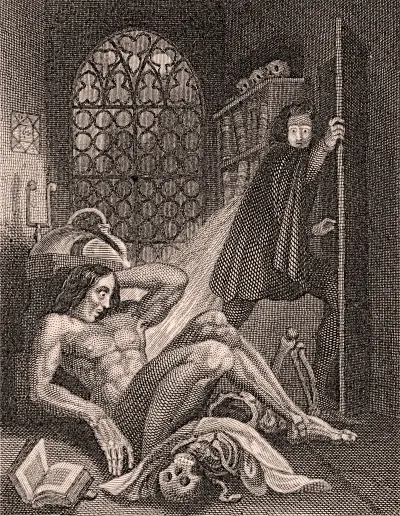When people think of science fiction, they often picture rockets, Martians, or far-flung futures. Yet the genre’s roots stretch back more than 200 years to a young woman writing by candlelight. In 1818, Mary Shelley published Frankenstein; or, The Modern Prometheus—a novel many consider the first modern work of science fiction. With that one book, she changed the course of literature and opened the door to an entirely new kind of storytelling.
From a Storm to a New Genre
The summer of 1816 was unusually dark and cold. Trapped indoors by constant rain, a group of young writers—including Mary Shelley, her future husband Percy Bysshe Shelley, and Lord Byron—challenged each other to invent ghost stories. Mary, only 18 at the time, had a vision: a scientist who gives life to a creature stitched together from the dead.
But instead of a sorcerer or demon-summoner, Victor Frankenstein was a man of science. His experiments reflected the era’s fascination with electricity, chemistry, and the boundaries of human knowledge. Beneath its Gothic setting, this scientific grounding is what sets the novel apart and marks the beginning of science fiction.
Why Frankenstein Is the First Sci-Fi Novel
Why do many call Frankenstein the first modern science fiction story? Because it does something new: it grounds the fantastic in science. Earlier tales had monsters, magic, and miracles, but Shelley asked a different question: What if science could actually do this?
That speculative “what if,” combined with an exploration of consequences, became a cornerstone of the genre. Unlike proto-science fiction works such as Margaret Cavendish’s The Blazing World (1666) or Johannes Kepler’s Somnium (1634)—which leaned more on allegory or astronomical speculation—Frankenstein integrates scientific possibility and its moral fallout directly into the story. That’s why it’s considered the true starting point of modern sci-fi.
Sci-Fi Themes That Still Resonate
Two centuries later, Frankenstein remains uncannily relevant. Shelley’s novel probes timeless questions: Just because science makes something possible, should it be done? Victor’s abandonment of his Creature—often mistakenly called “Frankenstein”—highlights the responsibility scientists have to their creations. And the Creature’s rejection, rooted in prejudice over his appearance, underscores the human costs of unchecked ambition.
These themes—ethics, responsibility, alienation—run through the entire history of science fiction, echoing forward into stories of cloning, AI, and beyond.
Frankenstein’s Sci-Fi Legacy on Screen
Frankenstein is among the most adapted works of classic literature. From Boris Karloff’s stitched-together monster in the 1930s to the countless retellings since, Shelley’s tale has never left popular culture.
Frankenstein’s status as the first sci-fi novel is part of why it adapts so easily. Its blend of speculative science and human drama invites reinterpretation for every era’s anxieties—from industrialization in the 1930s to artificial intelligence today. In October 2025, Guillermo del Toro’s Frankenstein will reach U.S. theaters (and Netflix in November), with Oscar Isaac as Victor, Mia Goth as Elizabeth, and Jacob Elordi as the Creature. Early reviews suggest this version will reignite discussion about the novel’s enduring sci-fi vision.
The Lasting Legacy of Mary Shelley’s Vision
It’s easy to forget that Mary Shelley was only a teenager when she conceived Frankenstein. She wasn’t setting out to invent a genre—but she did. By grounding her Gothic tale in contemporary science and exploring its human consequences, she created the template for science fiction itself.
When you read or watch Frankenstein today, you’re not just revisiting a Gothic classic. You’re stepping back to the spark that ignited science fiction—a flame that continues to guide the genre into the future.
Learn more about Mary Shelley and her contributions to science fiction on our founder page dedicated to her.
